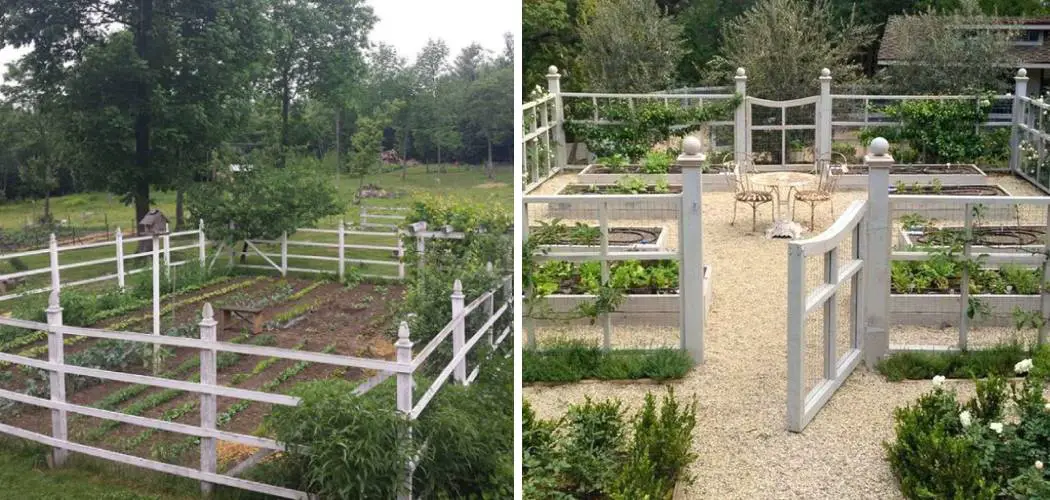Secure the bounty of your vegetable garden and shield it from prying pests by embarking on the rewarding journey of building a fence. Constructing a fence for your vegetable garden is a crucial step in protecting your precious crops and creating a dedicated space for nurturing wholesome produce.
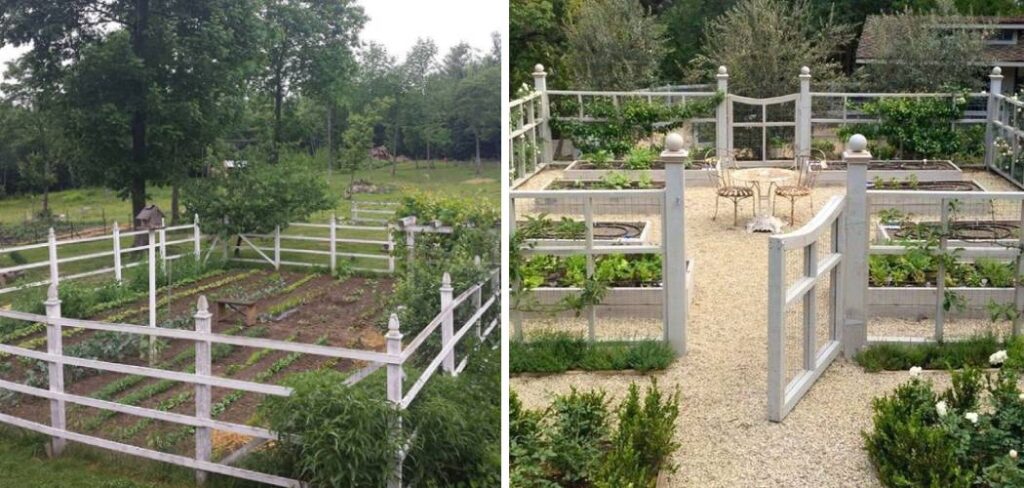
This essential garden project not only acts as a formidable barrier against critters and foraging wildlife but also adds a touch of charm and organization to your garden landscape. Whether you’re a seasoned DIY enthusiast or a novice with a passion for cultivating your own fresh vegetables
this article will guide you through the essential steps and helpful tips on how to build a fence for a vegetable garden.
From selecting the right materials and planning the layout to constructing sturdy posts and adding finishing touches, get ready to cultivate a thriving vegetable garden sanctuary protected by a sturdy and elegant fence. Embrace this empowering endeavor and watch your garden flourish in a safe and nurturing environment.
Importance of Fencing for Vegetable Gardens
Fencing a vegetable garden is an important part of creating a productive and healthy space for growing your own vegetables. Fences provide protection against animals such as deer, rabbits, groundhogs, and other wild animals that can harm plants or eat produce before it has time to mature.
Fences also help keep out pets and children who may accidentally trample on or damage crops. Finally, fences provide windbreaks which can protect young seedlings from high winds that could cause serious damage. As such, fencing plays an essential role in cultivating a successful vegetable garden.

When selecting a fence for your vegetable garden, there are numerous options available ranging from store-bought metal or wood panels to handmade slim stakes and string-wire combinations.
Each option has its own benefits and drawbacks, such as initial cost, materials used for construction, and the amount of maintenance required. It is important to research your options carefully in order to determine which type of fence will best suit your needs.
In addition to selecting the right type of fence for your garden, it is also essential that the fence be constructed correctly. Properly installed fences need a secure foundation with posts firmly planted into the ground or supported by concrete footings.
Fences should also have an even height, well-tensioned string or wire components between posts, and no gaps or weak points where animals could potentially squeeze through.
Benefits of Customized Vegetable Garden Fences
Fences are an important part of any vegetable garden. Not only do they help keep pests and animals out, but they can also be customized to suit your individual needs. Customizing the fence for a vegetable garden offers many benefits, such as:
- Improved Aesthetics – By customizing the fence to fit the overall theme of your garden, you can create a more visually appealing space that is unique and personalized to your own taste.
- Added Security – With a customized fence in place, you can feel more secure knowing that unwanted visitors will be kept out while still allowing easy access to those who need it.
- Increased Privacy – Installing a privacy-enhancing fence around your vegetable garden can offer you an extra layer of protection from unwanted onlookers or nosy neighbors.
- Increased Durability – Customized fences are typically made out of higher quality materials, making them more durable and able to withstand the elements better than non-customized fences.
- Improved Protection for Vulnerable Plants – Because customizable fences can be tailored to fit the needs of your particular garden, they are often better suited for protecting fragile plants that require special care. This means that you won’t have to worry about animals getting into your garden and destroying all of your hard work!
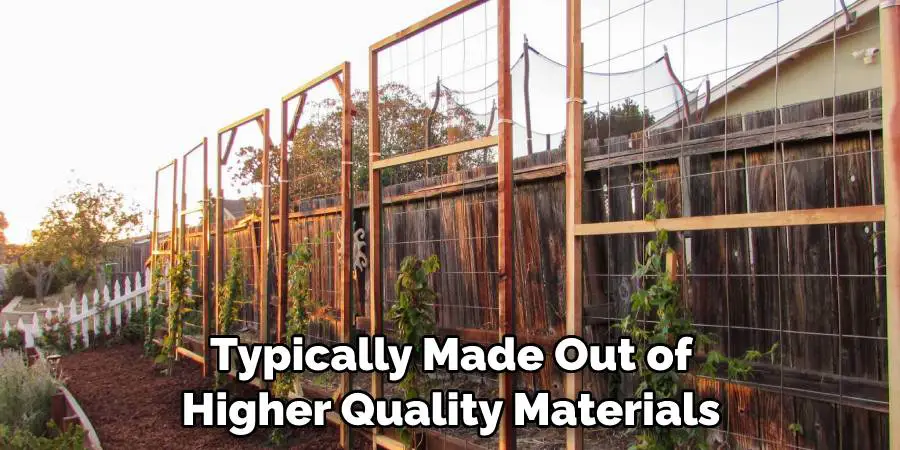
By customizing a fence for your vegetable garden, you can enjoy all these benefits while creating a space that is uniquely yours.
10 Methods How to Build a Fence for a Vegetable Garden
Method 1: Determine the Garden Area
Before embarking on your fence-building project, determine the area you want to enclose for your vegetable garden. Take into account the size and shape of the garden, as well as any existing structures or landscaping features that may affect the layout of the fence. Mark the boundaries of the garden area using stakes and string to create a clear outline for your fence.
Method 2: Choose the Right Materials
Selecting the right materials is essential for building a durable and effective vegetable garden fence. Common materials for garden fencing include wood, vinyl, metal, and wire mesh.
Wood is a classic and natural choice, while vinyl offers low maintenance and longevity. Metal fences provide sturdiness and security, and wire mesh is ideal for keeping out smaller pests. Consider your budget, climate, and personal preferences when choosing the materials for your fence.
Method 3: Plan the Fence Layout
With the garden area and materials chosen, plan the layout of your fence. Decide on the height and style of the fence based on your needs and aesthetic preferences. A fence that is at least 3 to 4 feet high is typically sufficient to keep out most pests.
However, if you have larger animals like deer in your area, you may need a taller fence. Sketch out the fence layout on paper or use a garden planning tool to visualize the design.
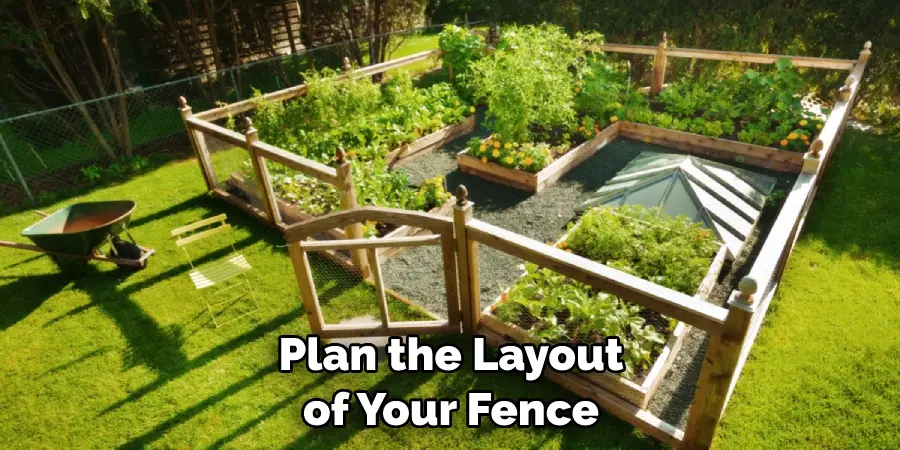
Method 4: Gather the Necessary Tools and Supplies
Before you start building the fence, gather all the necessary tools and supplies. Common tools needed for fence construction include a shovel, post hole digger, level, hammer, nails or screws, measuring tape, and saw. Depending on the type of fence you choose, you may also need concrete, brackets, and gate hardware.
Having all the tools and supplies on hand will make the building process more efficient.
Method 5: Install Sturdy Fence Posts
Fence posts are the backbone of your vegetable garden fence, providing stability and support. Dig holes for the fence posts using a post hole digger, ensuring that they are at least 1/3 of the post’s length below ground. Insert the posts into the holes and fill with concrete for added stability.
Use a level to ensure the posts are straight and plumb. Allow the concrete to cure before proceeding with the rest of the fence construction. If desired, you can also use a post driver to insert the posts into the ground for extra stability.
Method 6: Securely Attach Fence Rails
Once the fence posts are in place, attach the fence rails to create the framework for your fence. Fence rails are horizontal supports that connect the fence posts and provide stability to the fence panels. Depending on your chosen fence style, you may need to cut the rails to size and attach them using nails or screws.
Use a level to ensure the rails are straight and even. You can also use deck screws or lag bolts to attach the rails. Once the rails are attached, you can add fence panels or other fencing materials to complete your fence. Be sure to check the fencing material for any damage or needed repairs before installing it.
Method 7: Install Fence Panels
With the fence framework in place, it’s time to install the fence panels. Fence panels are the vertical sections that fill the gaps between the fence rails. If you are using pre-made fence panels, simply attach them to the rails using nails or screws. If you are building a custom fence, cut the panels to size and attach them individually.
Ensure that the panels are evenly spaced and level. Use clips or other fasteners to attach the fence panels securely. When you have finished installing all of the panels, go back and check for loose or uneven sections, and make the necessary adjustments.
Method 8: Add a Gate
A gate provides access to your vegetable garden and adds convenience to your gardening tasks. Install a gate at one end of the fence, ensuring it is wide enough to accommodate wheelbarrows and other gardening equipment. Use gate hardware to secure the gate to the fence posts and add a latch for easy opening and closing.
Method 9: Consider Adding Deer Fencing
If you live in an area with deer or other large animals, consider adding additional deer fencing to protect your vegetable garden. Deer fencing is a taller and sturdier fence designed to keep out larger animals. It can be added to the top of your existing fence or installed separately around the garden perimeter. Deer fencing typically features a fine mesh that prevents animals from squeezing through.
Method 10: Add Finishing Touches
Once your vegetable garden fence is complete, add some finishing touches to enhance its functionality and aesthetics. Consider adding trellises or supports for climbing vegetables like tomatoes and beans. Install bird netting or mesh to protect your crops from birds and other small pests.
Add some decorative elements like garden stakes or hanging planters to personalize your garden fence and make it a beautiful addition to your outdoor space.
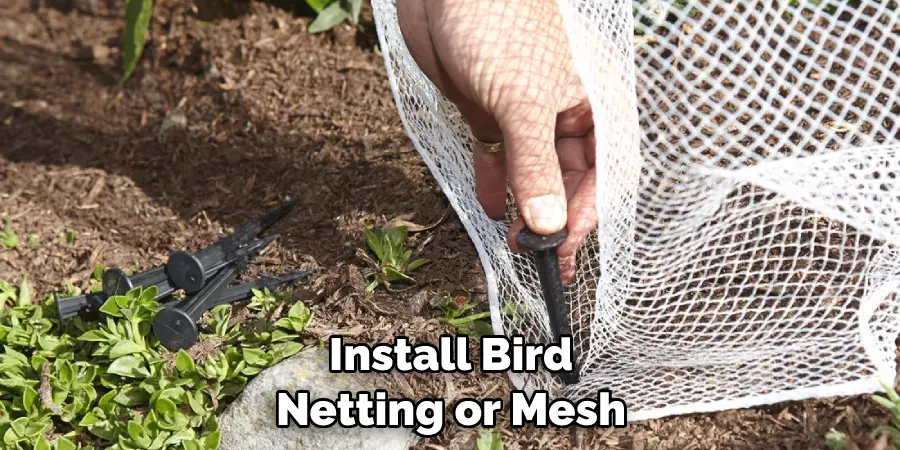
Conclusion
Building a fence for your vegetable garden is not as hard as it looks. Armed with the right tools and following the right steps, you can create a beautiful and secure fence that will keep pests out of your vegetables. Taking the time to build it correctly will ensure that you won’t have to knock it down and start from scratch if something goes wrong.
With these simple steps you can create a succesful fenced vegetable garden in no time! Hopefully, this article gave you some helpful tips about how to build a fence for a vegetable garden successfully, so now that you have the proper knowledge on how to get the job done, why not give it a try today?

